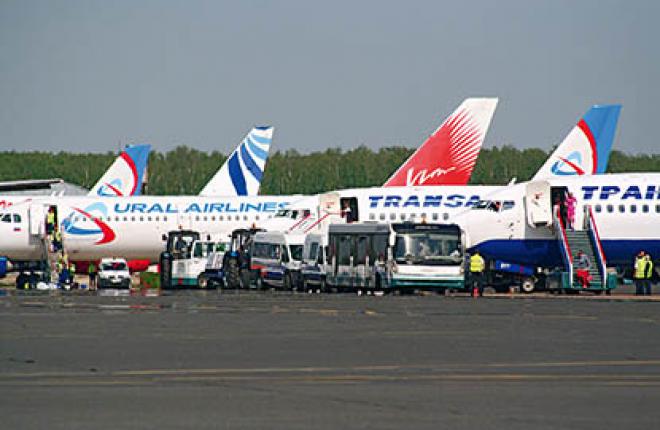More passengers, more empty seats

Russian airlines carried over 64 million passengers in 2011, flying a total of 166.7 billion passenger kilometers. This indicates an annual growth of 12.6% and 13.4% respectively, or half the growth rate registered in 2010.
Official comments stressed that the 2011 passenger numbers had exceeded those recorded in 1992, the year when Russian civil aviation entered a period of radical reforms. It should be noted though that the market was on the decline in 1992; a comparable figure for a growing market was last reported back in 1976. In other words, rather than clambering out of a 20-year recession the industry last year rolled back a full 35 years in terms of passenger numbers.
In addition, the very structure of air traffic has radically changed, as witnessed by the average sector length which is calculated by dividing the total number of passenger kilometres flown by the total number of passengers carried. The average sector length grew substantially in the 1990s as a result of actively developing international route networks; it still continues to grow, indicating that the greatest growth on the market is to be found in the sector of the more profitable international air services.
Continuing concentration
The Russian air transport sector is witnessing a continuing concentration of services in the hands of the top five airlines, which together accounted for 62.4% of passenger kilometres flown and 57.9% of all passengers carried on the domestic and international routes (see p.24). This is 4.2 and 4.8 percentage points higher, respectively, than the 2010 results. The average growth rate for the top five carriers were also higher than the industry average: passenger kilometres grew by 21.6%, and passengers carried by 22.6%, compared to the 13.35% and 12.59% growth across the industry.
Aeroflot and Transaero preserved their first and second positions on the list of the largest Russian carriers. Transaero demonstrated a better growth rate, particularly on international routes. UTair Aviation led the top five airlines in terms of growth, beating S7 Airlines to the third place by a narrow margin. However, continuing consolidation of assets and the establishment of air carrier groups are making precise analysis of performance reports difficult: the business groups no longer coincide with the carriers for which performance data are available. For example, the combined 2011 results for S7 Airlines and its subsidiary Globus are higher than those for UTair Group, which also includes the UTair Express regional feeder airline.
Это закрытый материал портала ATO.RU.
Полный текст материала доступен только по платной подписке.
Вопросы, связанные с платным доступом, направляйте на адрес paywall@ato.ru
Для пенсионеров у нас 50% скидка на все виды доступа. Зарегистрируйтесь на сайте под своим реальным ФИО (например, Иван Иванович Ивванов), указав, что Вы пенсионер, и отправьте с емэйла, который указали при регистрации скан/фотографию подтверждающего документа по адресу jkabardina@ato.ru.
Услуга "Автоплатеж". За двое суток до окончания вашей подписки, с вашей банковской карты автоматически спишется оплата подписки на следующий период, но мы предупредим вас об этом заранее отдельным письмом. Отказаться от этой услуги можно в любое время в личном кабинете на вкладке Подписка. Подробные условия автоматической пролонгации подписки.
Я подписчик / Я активировал промокод.
Если у вас есть неактивированный промокод, авторизуйтесь/зарегистрируйтесь на сайте и введите его в своем Личном кабинете на вкладке Подписка
Ссылки по теме
- Для того, чтобы оставить комментарий, не привязанный к социальной сети, войдите или зарегистрируйтесь на нашем сайте.
CIS & Russian Aviation News And Insights
- Aeroflot to add 23 new destinations to its vast summer route network
- Sky Gates Airlines takes delivery of second Ilyushin IL-96-400T
- Superjet 100 flies with Russian engines
- Aeroflot posts first full year profit since pandemic
- Supporting Russia’s fleet of Western-built aircraft is a humanitarian necessity – AmCham Russia
- Rosaviatsiya: Russian airlines’ passenger traffic to decline in 2025
- Aeroflot promotes initiative towards harmonization of Russia’s continued airworthiness system with international standards
- Russia’s Smartavia passenger traffic decreased by 6.7%
- Russian airlines 2024 traffic exceeds the pre-sanctions level









